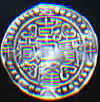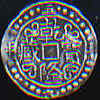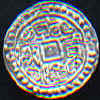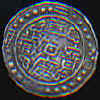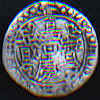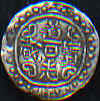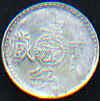Issuance of Sycee
Principal Sycee & Auxiliary Cash
Cash and sycee were the 2 major types of coinage used in China during most of the period from the Sung Dynasty until the end of the Ching Dynasty. The monetary functions they played were quite different-cash was "small money" which circulated widely in all levels of society; and sycee was "big money" more frequently used by governments and rich individuals who dealt with payments of significant values.
The mintage of cash was far larger than that of sycee in order to accommodate the demand of the general public for coinage used in daily transactions. This, however, did not change the fact that sycee was a principal money, and cash was an auxiliary.
Free Sycee & Monopoly Cash
The government reserved for itself the right to issue and
supply cash to the Chinese people, and competition against the government was
not allowed. Issuance of sycee, on the other hand, was opened to the
public. Anyone who acquired silver bullion could cast sycee; as long as the
actual purity of the silver was as represented, the crime of
"counterfeiting sycee" did not exist.
It is intriguing that successive
Chinese governments strictly enforced a monopoly policy on issuing cash (which
had trivial value), but that the issuance of sycee, which served as legal tender
and the principal money of China and was even used as a monetary unit in the
governmental accounting books, was never constrained or regulated.
The different treatments cash and sycee received
from the government was greatly influenced by the way in which Chinese people
valued sycee. They evaluated each ingot by its weight and fineness and
disregarded its shape or form. Since there was no stated denomination, the value
of sycee was determined by silver content, not by the issuer or the government.
A heavy sycee could be recast into
several smaller pieces in the shapes, weights and fineness that its owner
needed, or alternatively, many smaller pieces of sycee could be melted down for
a single large ingot. Actually, the sycee "currency" was a kind
of coinage that was not intended to maintain a steady form or feature. The
recasting, refining, and recycling of sycee was a hallmark of its circulation
since sycee users had to "issue" different sycee to meet various
payment demands. As a result, there was no natural way for the government to
interfere with or stop this process.
After using sycee for centuries, it was very difficult for Chinese to accept a currency with "nominal value" exceeding its material value; perhaps it was because they had suffered repeatedly from serious debasements of paper money caused by various dynasties, and each instance strengthened the loyalty of the population to sycee as a store of value.
Sycee Syndromes
There were, however, some side effects resulting from the customs surrounding the circulation of sycee.
- When the Chinese first encountered foreign silver coins in the late 16th century, those coins were treated like sycee for several decades; they were evaluated by weight and silver fineness.
- In the 57th year (1792) of the Chien Lung reign of the Ching Dynasty, when the
emperor found out Tibet was mainly circulating Nepali silver Tangka, he
determined, for political reasons, to expel those foreign issues by casting new
Tangka in the Chinese style (See below). Reportedly, the imperial government
sent large numbers of sycee to Tibet to be recast as ordered, but the output was
9 maces of Tangka per tael. It indicates that the Chinese Tangka was another
form of sycee, with 10% of the sycee silver consumed as the cost and expense for
the casting. As a result, those new Tangka were in a better silver fineness than
the Nepali version, but the imperial government could not afford to cast more
than a limited amount as a political gesture.
Chien Lung Treasury Coins, 1 mace:
Fig1: The 58th Year (1793)
Fig2: The 59th Year (1794)
Fig3: The 60th Year (1795)
Jia Ching Treasury Coins. 1 mace
Fig4: The 24th Year (1819)
Fig5: The 25th Year (1820)
Tao Kuang Treasury Coin. 1 mace
Fig6: The 2nd Year (1822)
Hsuan Tung Treasury Coins (N.D. 1909-1911)
Fig7: 2 mace
Fig8: 1 mace
During the last few years of the Ching Dynasty, some provincial
governments began to issue sycee in uniformed weights and fineness with the
intention of competing with machine-struck silver coins; the most outstanding
ones were the Hunan silver cakes and Kueichow Half Balls (See below). But,
sycee, after all, was not coin. At that time, the debasement of silver coins had
already been commonly accepted by the people, and the "nominal value"
typically exceeded the material value. This was still not the case for sycee.
The value of the issued sycee was equal to its silver value; there was no
premium for the issuing authorities. Apart from that, they had to absorb all the
costs of casting. As a result, these trials did not continue very long before
the provincial governments exhausted all their funds.
Fig9: Hunan Silver Cake
Fig10: Kueichow Half Boat
(Inscribed with the fineness and scale standards as applied)
Return to Sycee Talks
